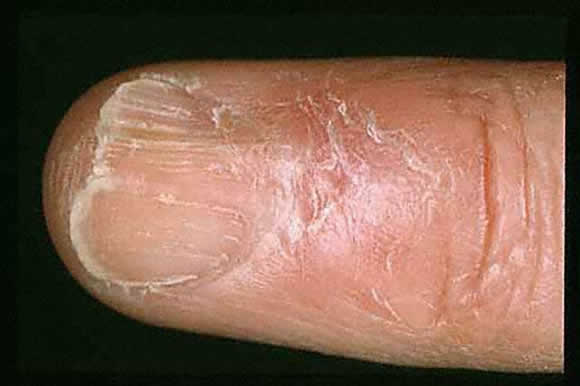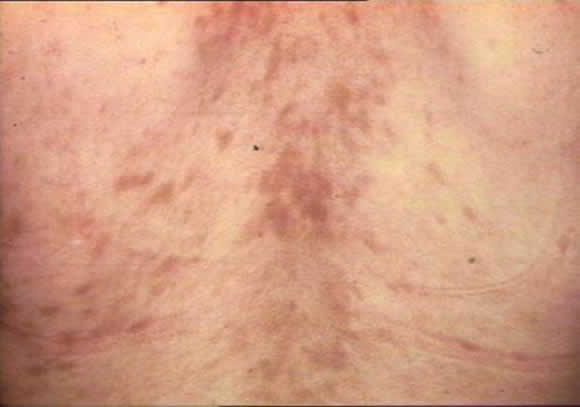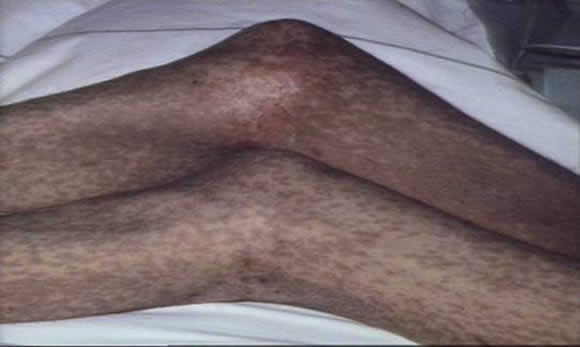Skin
Chronic Graft vs Host Disease (CGvHD)
Chronic graft versus host disease:
- Immunocompetent cells of donor tissue react with tissues of immunosuppressed graft recipient1
- Requires:
- Profound depression of recipient's cellular immune response
- Receipt of an allograft of immunocompetent cells
- Recognition by the allograft of foreign antigens in host tissue
- Pathogenesis:
- Donor T lymphocytes interact with recipient histocompatibility antigens to which they become sensitized which then mount an attack on recipient cells producing the clinical signs of GvHD
- Target organs:
- Skin
- GI tract
- Lung
There are 4 grades of skin GvHD1:
| Grade | Definition |
| 1 | Focal or diffuse vacuolation of the basal epidermal cells |
| 2 | Vacuolar alteration of the basal epidermal cells with: Spongiosis and dyskeratosis of epidermal cells |
| 3 | Formation of subepidermal cleft in association with spongiosis and dyskeratosis |
| 4 | Complete loss of epidermis |
Changes may occur in the superficial, epidermal or deep into the subcutis and fascial layers of skin3
Skin manifestations of cGVHD3 can be very severe and difficult to treat (can become life threatening4)
Chronic GvHD is characterized by sclerotic skin, pigmentation and a lichen planus type rash. Fibrosis of the skin or subcutaneous layers may progress and result in joint contractures (flexion deformities), severe wasting and even chest wall restriction3
Manifestations of chronic GvHD in skin, nails and hair3:
- Sclerosis (lichen planus like features)
- Sweat impairment
- Ichthyosis
- Keratosis pilaris
- Hypo,/hyper pigmentation
- Changes in hair pigmentation
- Alopecia
- Erythema
- Poikiloderma (combination of atrophy, telangiectasia and pigmentary skin changes)
- Maculopapular rash
- Nail Dystrophy
- Pterygium unguis
- Scaling, papulosquamous lesions of scalp
Symptoms of cGvHD:
- Pruritus
- Skin dryness
- Longitudinal ridging, splitting of nail
- Nail loss
- Thinning of hair
- Premature graying
Nail dystrophy and periungal pigmentary changes of cGvHD:

Hyperpigmentary changes with sclerosis of skin caused by cGvHD:

Severe myositis and fasciitis resulting in joint contractures around knees in cGvHD. Profound areas of generalized pigmentary changes and erythema and ulceration of skin on right knee are also due to cGvHD:

Links:

